Rio de Janeiro << REE oh day zhuh NAIR oh >> is one of the largest cities of Brazil. The municipality of Rio de Janeiro has a population of 6,320,466. A municipality may include rural areas as well as the urban center. Rio de Janeiro is an important center of finance, trade, and transportation. It also has one of the chief seaports of South America. Rio is the capital of the state of Rio de Janeiro in southeastern Brazil. It is often called simply Rio. Brazilians also call it Cidade Maravilhosa (Marvelous City).
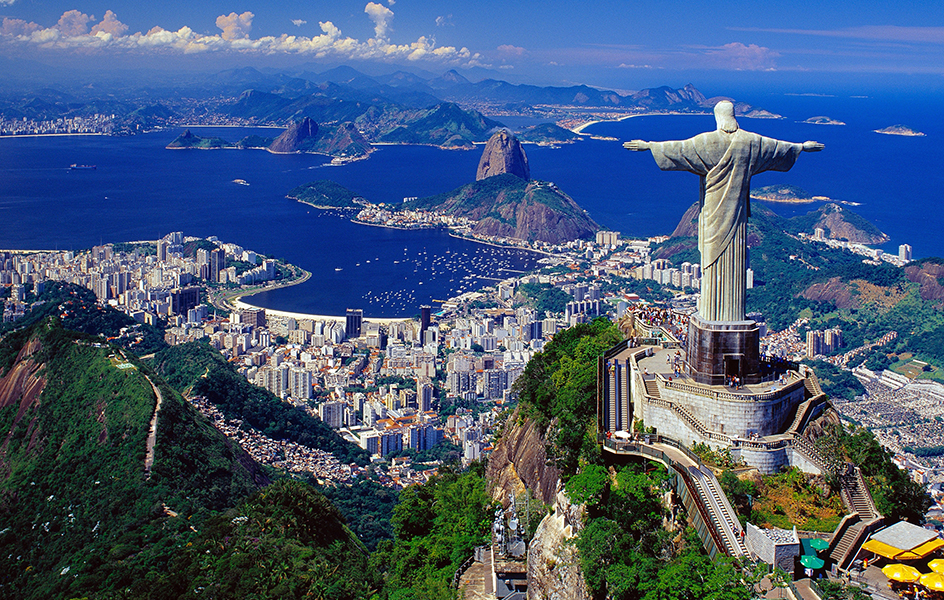
Rio de Janeiro’s exciting scenery makes it one of the most beautiful cities in the world. Rio lies between forested mountains and the sparkling blue waters of the Atlantic Ocean and Guanabara Bay. Gleaming white beaches and graceful palm trees rim the shore. Sugar Loaf Mountain rises 1,325 feet (404 meters) from a peninsula in the bay.
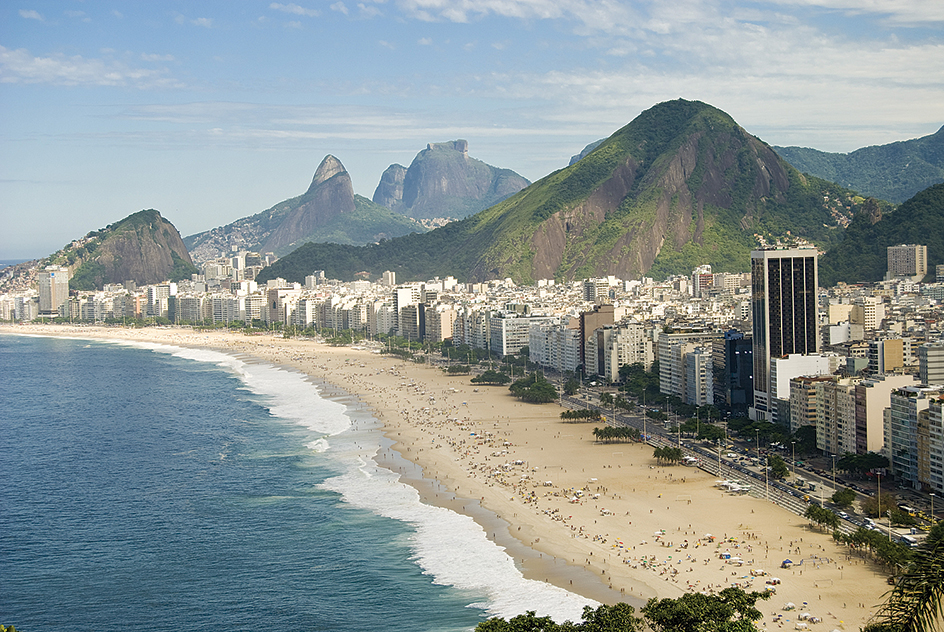
Rio developed from a fort established by Portuguese soldiers in 1565 on what is now Guanabara Bay. The Portuguese named their settlement for the bay, which at that time was called Rio de Janeiro (River of January). Historians believe that the Portuguese explorer Gonçalo Coelho had named the bay for the month in 1502 when he arrived there. Coelho thought the bay was the outlet of a great river.
The city
covers about 487 square miles (1,261 square kilometers). The ocean shore forms Rio’s southern boundary. Guanabara Bay borders the city on the east. Mountains rise to the north and west. The city itself includes many steep hills. A huge statue called Christ the Redeemer overlooks the city from atop Corcovado Mountain, the highest of these hills.
Rio has three main sections called the north, center, and south zones. The north zone is the largest zone. It has many docks and factories and large, poor residential areas. The Rio-Niterói Bridge, which stretches about 83/4 miles (14 kilometers), connects the north zone with Niterói, a city east of Guanabara Bay. The water in parts of the bay is polluted by sewage and industrial waste.
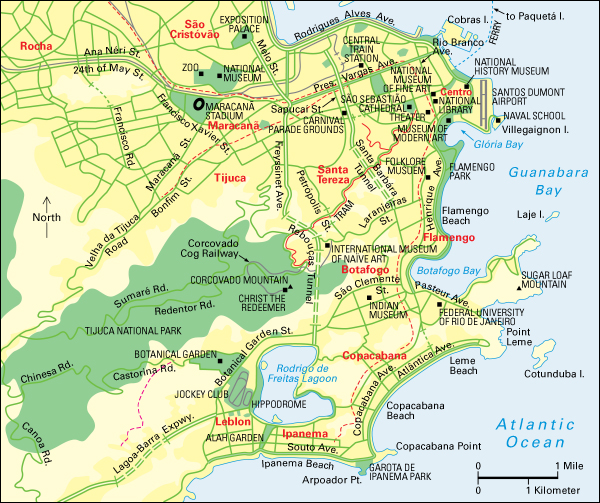
The small center zone includes the main business district. In downtown Rio, large modern office buildings stand near pastel churches built during the city’s colonial period (the 1500’s to the 1800’s). Automobiles crowd such broad boulevards as President Vargas and Rio Branco avenues. Other downtown streets are narrow and limited to pedestrians. Most of Rio’s chief libraries, museums, and theaters are in the central zone.
The long, narrow south zone includes a lake, Rodrigo de Freitas Lagoon. The nearby Botanical Garden features tropical plants. Hundreds of tall apartment buildings overlook the many beaches of the area. Copacabana Beach is famous for its elegant hotels and patterned sidewalks made of colored stone.
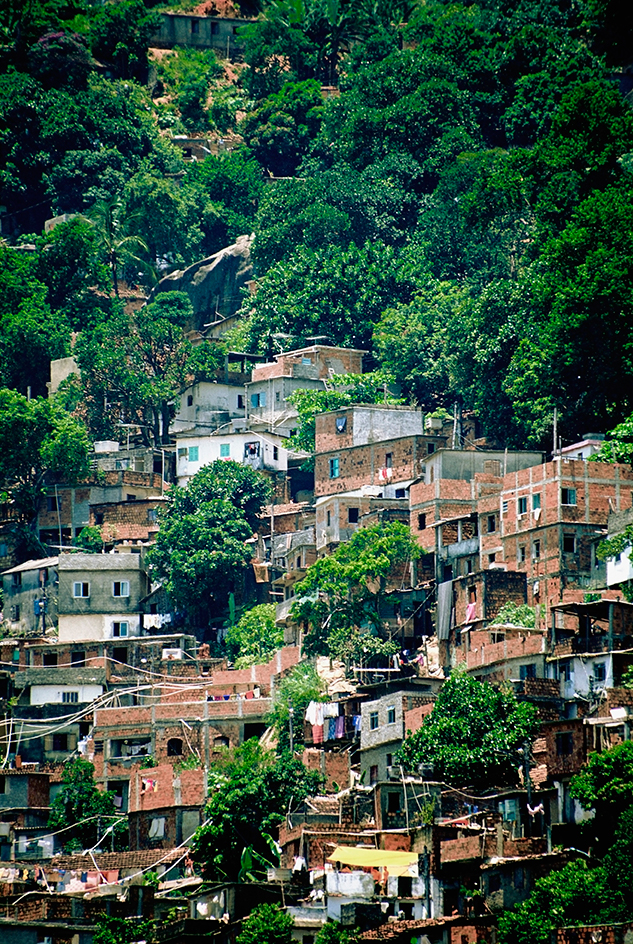
Slums called favelas form a sharp contrast to the luxury of Copacabana. Thousands of people live in shabby shacks on the steep hillsides and swampy shorelands of the bay. Suburban communities lie in valleys near Rio. Many low-income workers live in these towns.
People
of Rio de Janeiro have long been called Cariocas. The Portuguese settlers may have taken this nickname from a South American Indian expression meaning white man’s house. Today, Cariocas include people of American Indian, European, and African descent. Many have ancestors from two or three of these groups. Cariocas, like other Brazilians, speak Portuguese.
Most of the city’s people belong to the Roman Catholic Church. Many of the Catholics also participate in Macumba religious ceremonies. Followers of Macumba pray to divine beings who are identified both with Christian saints and with the gods and goddesses of certain African religions. On New Year’s Eve, hundreds of thousands of Cariocas crowd the beaches for candlelit Macumba ceremonies. These ceremonies honor the sea goddess Iemanjá.
Many Cariocas go to the beach to sunbathe, swim, or play volleyball. Huge crowds cheer the soccer teams that play at Maracanã Stadium, one of the largest sports arenas in the world. In the evening, many people go to one of Rio’s many nightclubs or chat with friends at a sidewalk cafe. 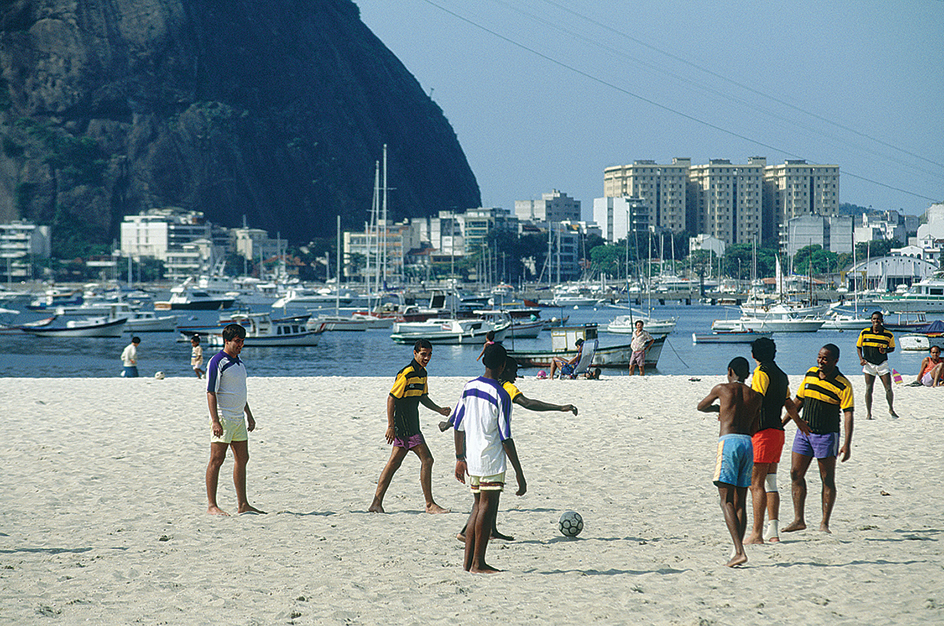
Rio has won fame for an annual festival called Carnival. Carnival takes place just before Lent, the religious season that comes before Easter. Carnival features four days and nights of parades and dancing in the streets.
Education and cultural life.
Rio’s schools, libraries, and museums make the city the leading cultural center of Brazil. The Federal University of Rio de Janeiro is the largest of the several institutions of higher learning. The city’s libraries include the National Library. The National Archives of Brazil also are in Rio. Many visitors view the exhibits at such museums as the National Museum of Fine Arts, the Edison Carneiro Folklore Museum, and the Indian Museum. The Museum of Tomorrow, designed by the famous Spanish architect Santiago Calatrava, focuses on science and the environment. The Municipal Theater, an opera house built in Rio in the early 1900’s, is based on the Palais Garnier, also known as the Paris Opera, in Paris.
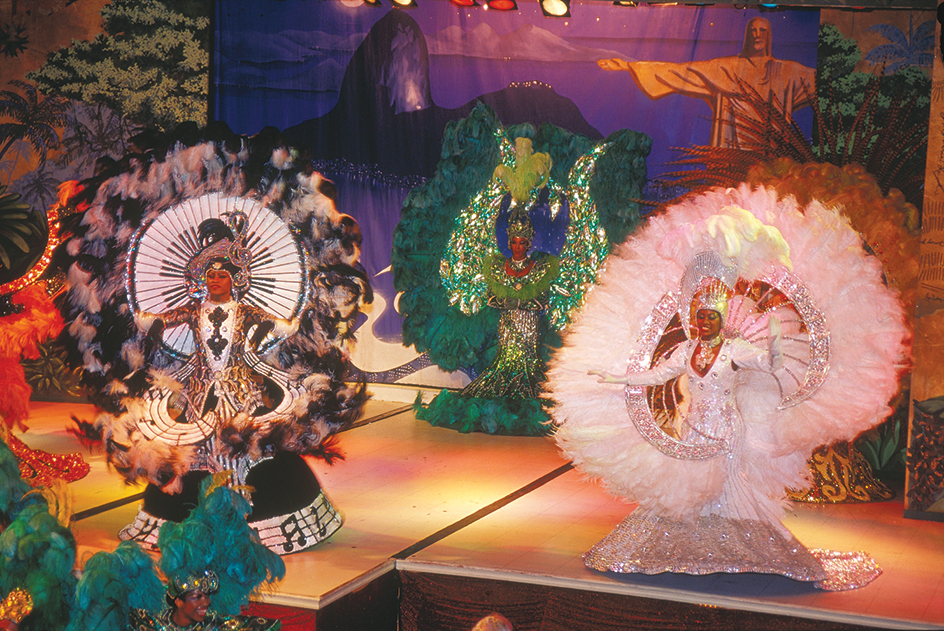
Economy.
Rio’s banks and stock market make the city a center of Brazilian finance. The city’s factories produce a significant portion of Brazil’s industrial output. Products of Rio include processed foods, chemicals, drugs, and metals. The city has many large shipyards. Tourism is also an important industry.
Rio is a major transportation center. Highways and railroads link the city with other large Brazilian cities. Rio has two major airports. It is also one of Brazil’s chief seaports. A ferry connects Rio with Paquetá Island in Guanabara Bay. A subway system and many buses provide local transportation.
History.
Tupi Indians lived near what is now Guanabara Bay when Portuguese explorers first arrived there in 1502. Portugal had claimed the Brazil region as a colony in 1494. France established a settlement on the bay in 1555. Ten years later, Portuguese soldiers led by Captain Estácio de Sá established a fort there. They drove out the French in 1567. The fort grew into the city of Rio de Janeiro.
Portuguese prospectors found gold in southern Brazil during the 1690’s. Ships then began to carry the precious metal from Rio to Portugal. The gold trade attracted many settlers to Rio during the 1700’s. The city became the capital of Brazil in 1763.
The ruler of Portugal, Prince John (later King John VI), came to Rio in 1808 to escape a French invasion of Lisbon, the Portuguese capital. He made Rio the capital of the Portuguese Empire. Thousands of other wealthy Portuguese also fled to Rio. They established medical and military schools and a large city library. Lisbon again became the capital of the empire in 1821, when John returned there. In 1822, Brazil became independent with Rio as its capital. Trade expanded with Europe and North America in the mid-1800’s. Coffee became an important export. Rio had more than half a million people in 1890.
During the early 1900’s, Rio was modernized. The port was redesigned. Broad boulevards were constructed. Millions of people moved to the city from rural Brazil during the early and mid-1900’s. Apartment buildings were erected to provide housing for the growing population. However, many of the newcomers could not afford to rent apartments. They had to live in the favelas. Since the mid-1900’s, the federal government has built a number of housing projects in Rio for low-income residents. The government has also granted financial aid to manufacturers in an effort to attract new industrial employers to Rio de Janeiro.
Brasília replaced Rio as the national capital in 1960. The federal government moved there during the 1960’s and 1970’s. Since 1975, Rio has absorbed some of its suburbs and outlying areas. As a result, the city’s area has increased from 60 square miles (155 square kilometers) to 487 square miles (1,261 square kilometers). The population has also increased greatly. In the early 2000’s, housing for the poor and pollution were among the problems facing the government of Rio.
In July 2007, Rio de Janeiro hosted the 15th Pan American Games, an athletic competition held every four years in the Western Hemisphere. In 2009, the International Olympic Committee chose Rio to host the 2016 Olympic Games. It was the first time a South American city had been chosen as the site for the Olympics. In 2014, Rio was one of 12 Brazilian cities that hosted the World Cup soccer competition, held every four years. Rio had hosted World Cup games once before, in 1950. Such sporting events helped initiate a large project to revitalize Rio’s port area in the early 2000’s. 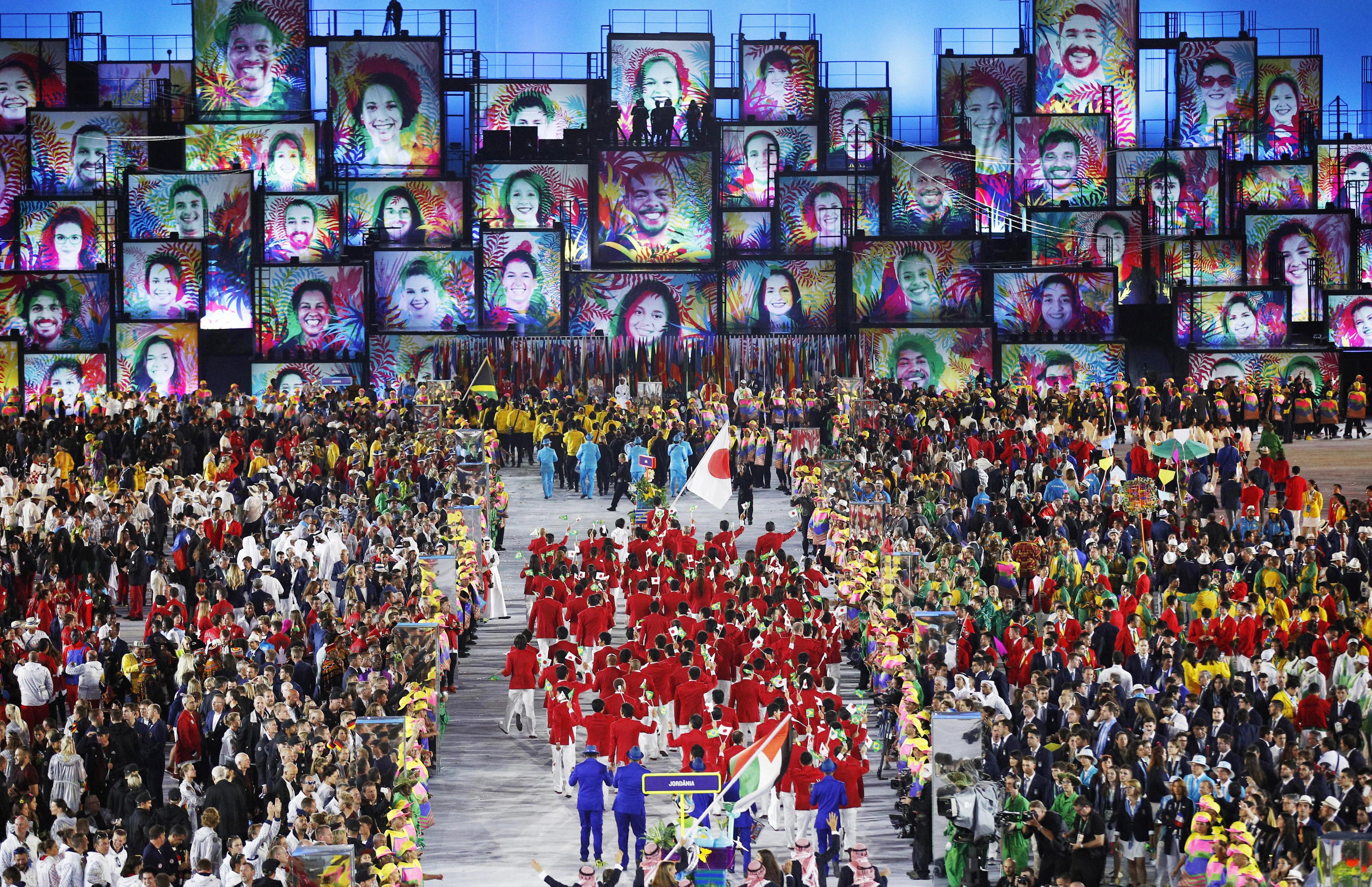
Heavy rains—the heaviest in about 50 years—caused deadly landslides in the Rio de Janeiro metropolitan area in April 2010. Government officials said that hundreds of people, mostly residents of Rio’s slums, were killed and that thousands were left homeless. In January 2011, mudslides caused by flooding killed more than 800 people in neighboring towns north of Rio de Janeiro.
See also Seven natural wonders of the world (The Harbor of Rio de Janeiro).
